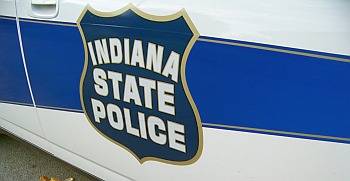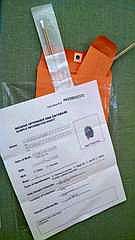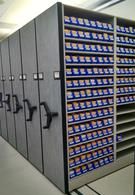 Indianapolis – CODIS is the Combined DNA Index System which came into existence by legislative act in 1996. As originally enacted, the law required people convicted of crimes against persons or burglary to provide a DNA sample, or profile, for the database. In 2005 the law was expanded to include DNA profiles of persons convicted for any felony offense.
Indianapolis – CODIS is the Combined DNA Index System which came into existence by legislative act in 1996. As originally enacted, the law required people convicted of crimes against persons or burglary to provide a DNA sample, or profile, for the database. In 2005 the law was expanded to include DNA profiles of persons convicted for any felony offense.
The samples are collected at Indiana Department of Corrections locations, county jails and probation and community corrections facilities across Indiana. Once collected the samples are submitted to the Indiana State Police Laboratory in Indianapolis where they are analyzed and converted into profiles.

Aside from DNA profiles of convicted felons, DNA evidence recovered from crime scenes believed to have originated from an unknown suspect is also entered into CODIS. Examples of crime scene DNA evidence collected could include a bloodstain on a broken window or seminal material from the victim of a sexual assault.
Each week, the CODIS software compares all submitted profiles to one another and identifies any matches between profiles collected from crime scenes with known DNA submissions of convicted felons. When matches occur, they can provide valuable lead information to law enforcement agencies.
 On average there is a match made 48% of the time. This means that for every two unknown profiles a match results in a potential investigative lead to one of the two DNA profiles. The match may be to the name of an offender in CODIS or may match to an unknown DNA profile linked to two or more crime scenes. These matches may allow for different investigating agencies to collaborate and work toward solving crimes when the same DNA profile is linked to crimes in different jurisdictions anywhere in Indiana or across the United States.
On average there is a match made 48% of the time. This means that for every two unknown profiles a match results in a potential investigative lead to one of the two DNA profiles. The match may be to the name of an offender in CODIS or may match to an unknown DNA profile linked to two or more crime scenes. These matches may allow for different investigating agencies to collaborate and work toward solving crimes when the same DNA profile is linked to crimes in different jurisdictions anywhere in Indiana or across the United States.
On Monday, October 19, 2015 the Indiana State Police Laboratory CODIS software made its 5,000th match. While it took nearly 19 years to achieve this milestone, the march to 10,000 matches will take less time. Consider that on average each year there are DNA profiles added from roughly 15,000 convicted offenders, as well as DNA evidence from about 1,000 case profiles. Presently there are more than 255,000 DNA profiles available for comparison, and typically an additional 300 profiles are added each week. Every Indiana County has had at least one CODIS match. DNA profiles submitted by Indiana offenders has been matched to crimes, or persons being investigated for criminal acts, in 43 other states.
 Aside from CODIS helping to solve crimes, matches can also be used to aid in the identification of human remains. DNA from the personal items and relatives of missing persons can be entered and searched against unidentified remains recovered throughout the United States to help identify and return them to their families.
Aside from CODIS helping to solve crimes, matches can also be used to aid in the identification of human remains. DNA from the personal items and relatives of missing persons can be entered and searched against unidentified remains recovered throughout the United States to help identify and return them to their families.
The Indiana State Police Laboratory has aided police agencies all over Indiana with DNA analysis as well as the analysis of non DNA material to advance criminal investigations. Such analysis is often the turning point of an investigation that results in identifying the suspect of a crime.
Photo Legend:
Photo file “DNA Sample Collection Kit” shows an example of what is used to collect a DNA profile
Photo file “DNA Sample Storage Files” shows how collection kits are filed
Photo file “DNA Helix” is illustrative of what DNA looks like under extreme magnification














